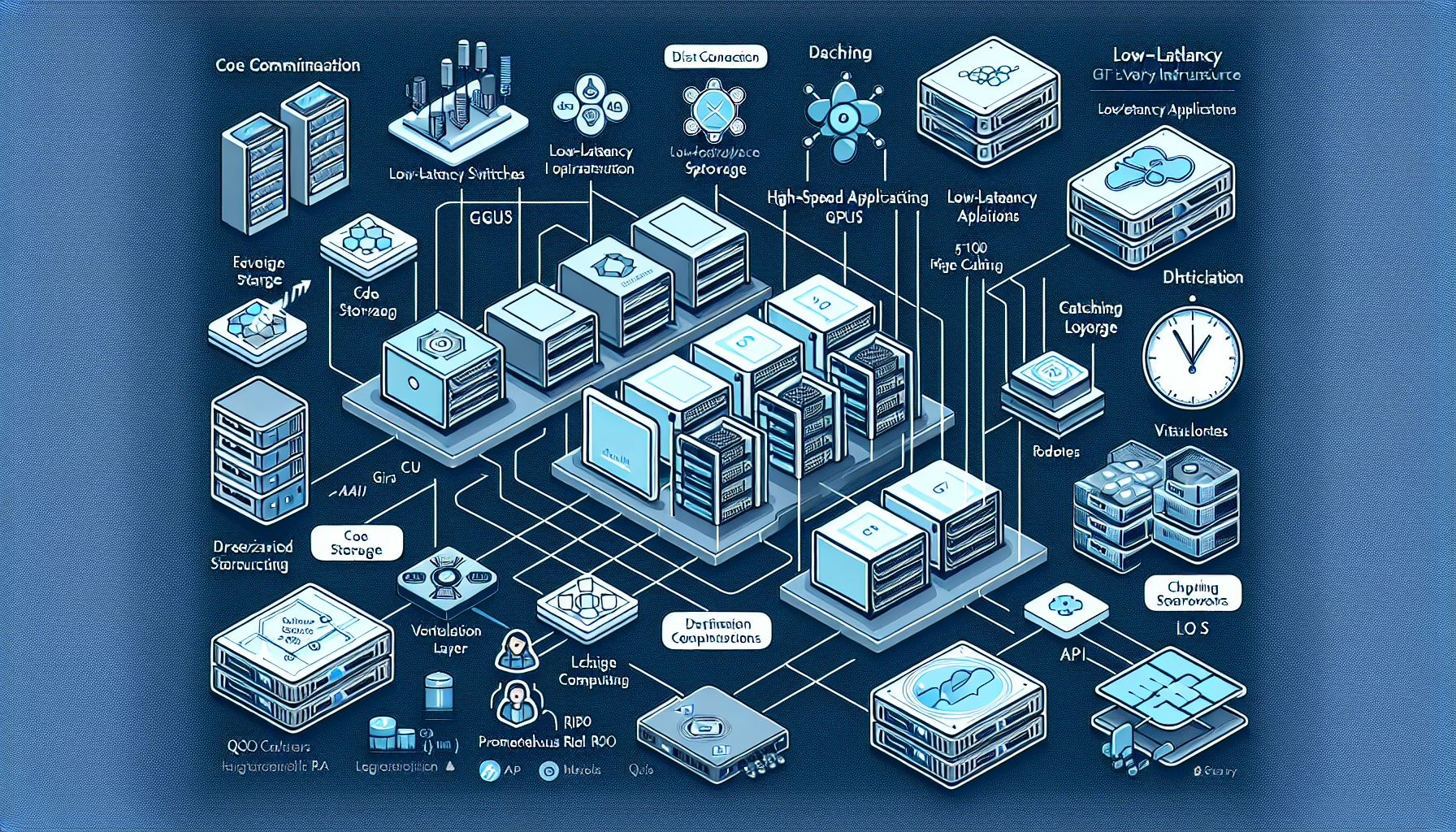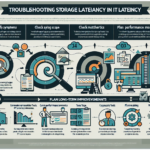Optimizing IT infrastructure for low-latency applications requires a strategic approach across hardware, software, networking, and system design. Here are the key steps to ensure your infrastructure meets the demands of low-latency applications:
1. Network Optimization
- Minimize hops: Reduce the number of network hops between components by simplifying network architecture.
- Use low-latency switches and routers: Deploy high-performance networking hardware designed for low-latency environments.
- Leverage high-speed connections: Use technologies like fiber optics, 10Gbps, 25Gbps, or even 100Gbps Ethernet connections.
- Enable jumbo frames: Configure jumbo frames for larger packet sizes to reduce overhead for high-throughput applications.
- Reduce network congestion: Use Quality of Service (QoS) settings to prioritize latency-sensitive traffic.
- Use direct connections: For critical applications, establish direct server-to-server connections to bypass intermediaries.
2. Storage Optimization
- Deploy NVMe drives: Non-Volatile Memory Express (NVMe) SSDs provide ultra-low latency compared to traditional spinning drives or even SATA SSDs.
- Optimize RAID configurations: Use RAID setups that balance redundancy and performance, such as RAID 10.
- Implement caching: Use in-memory caching tools like Redis or Memcached to reduce read/write latency.
- Reduce I/O bottlenecks: Ensure proper sizing of storage controllers and adequate disk I/O capacity.
- Use tiered storage: Store frequently accessed data on faster storage tiers and less-accessed data on slower ones.
3. Server Optimization
- Use high-performance CPUs: Deploy servers with CPUs optimized for single-thread performance if the application is single-threaded or latency-sensitive.
- Maximize RAM: Ensure applications have sufficient RAM to avoid swapping to disk.
- Enable NUMA-aware processing: Configure systems to ensure that memory and processors are optimally paired for faster access.
- Minimize background processes: Disable unnecessary services and processes that consume CPU cycles.
4. Virtualization and Containerization
- Optimize hypervisor settings: Use performance-tuned hypervisors like VMware ESXi or KVM with minimal overhead.
- Deploy Kubernetes effectively: For containerized workloads, ensure Kubernetes is configured to minimize pod-to-pod communication latency.
- Use bare-metal servers: For applications that demand the lowest latency, avoid virtualization and deploy directly on physical servers.
5. GPU Optimization
- Use specialized GPUs: For AI and machine learning workloads, use GPUs like NVIDIA A100, H100, or AMD Instinct MI200, which are designed for low-latency computation.
- Enable GPUDirect RDMA: For applications using GPUs, use NVIDIA GPUDirect RDMA to allow GPUs to communicate directly with network devices, bypassing the CPU.
- Optimize GPU memory: Ensure GPU memory is sufficient for workloads to avoid expensive memory transfers.
6. Application Optimization
- Code optimization: Profile and optimize your application code to remove bottlenecks, improve threading, and reduce computational overhead.
- Minimize API calls: Reduce the number of external API calls or optimize them for faster responses.
- Use edge computing: Deploy applications closer to end-users or data sources to minimize geographic latency.
7. Monitoring and Troubleshooting
- Use APM tools: Application Performance Monitoring tools like Datadog, Dynatrace, or New Relic can help identify latency issues.
- Implement real-time monitoring: Use tools like Prometheus and Grafana for real-time infrastructure monitoring.
- Analyze bottlenecks: Continuously analyze traffic patterns and identify components causing delays.
- Stress test: Perform regular load testing to understand infrastructure limits and identify potential latency issues.
8. Optimize Kubernetes for Low-Latency Apps
- Node affinity: Use node affinity rules to place latency-sensitive workloads on specific nodes.
- Pod networking: Implement CNI plugins that prioritize low-latency networking, such as Calico or Cilium.
- Horizontal Pod Autoscaling: Ensure pods scale based on real-time metrics to avoid resource starvation.
9. Reduce Latency in Backup and Storage
- Use snapshots efficiently: Optimize snapshot schedules to avoid performance degradation during backups.
- Leverage backup tiering: Store backups on high-speed storage for quick recovery if needed.
10. General Best Practices
- Deploy edge computing: Move workloads closer to the data source or end-user to reduce geographic latency.
- Minimize virtualization overhead: For extremely latency-sensitive applications, consider bare-metal deployments.
- Optimize power and cooling: Ensure consistent power and cooling to prevent hardware throttling due to overheating.
- Update firmware and drivers: Regularly update hardware firmware and drivers to gain performance improvements.
By continuously monitoring and tuning your IT infrastructure, you can ensure low-latency performance for critical applications. Regular reviews of workloads, hardware performance, and system configurations will help identify new opportunities for optimization.





